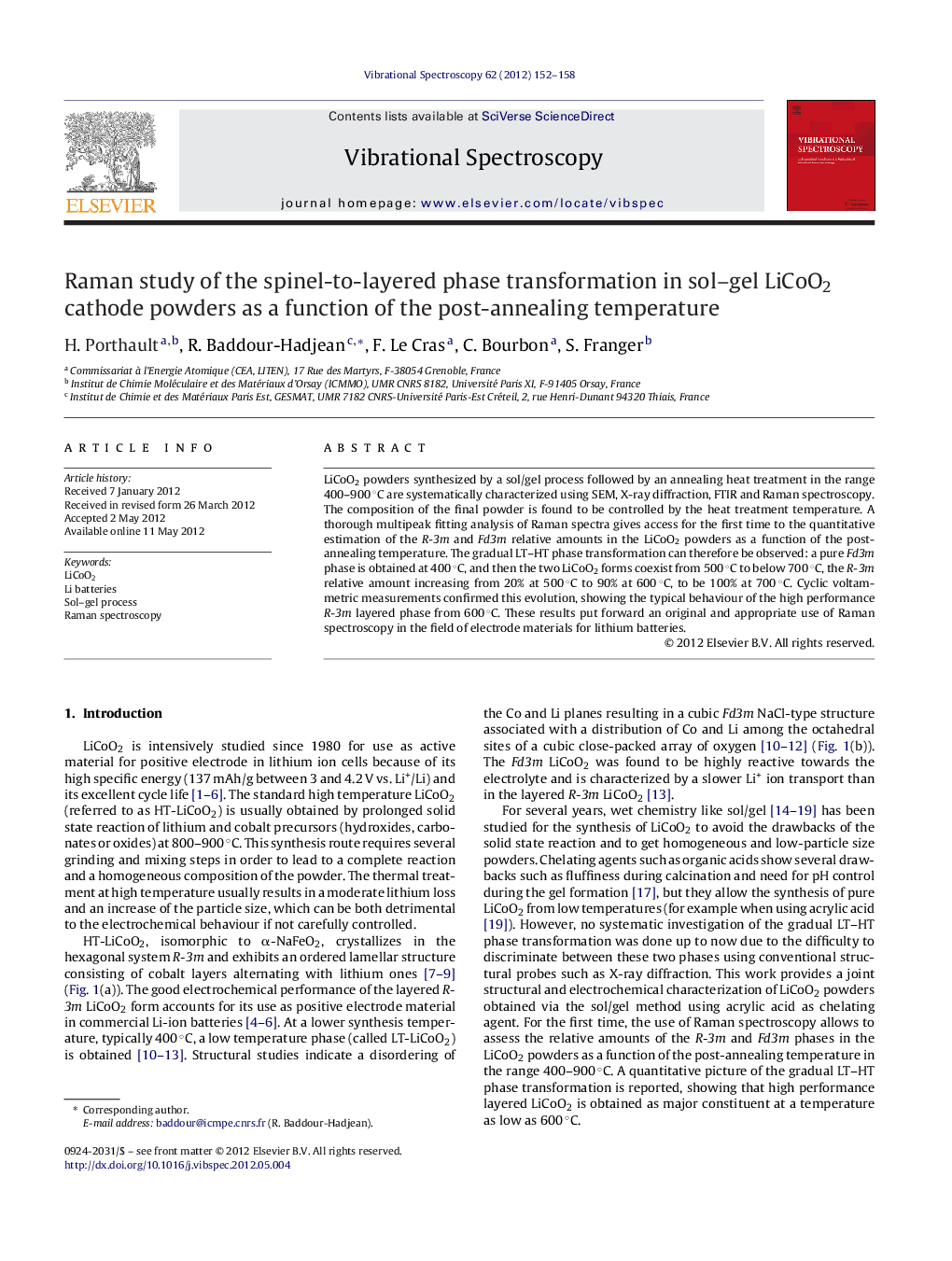| Article ID | Journal | Published Year | Pages | File Type |
|---|---|---|---|---|
| 1250478 | Vibrational Spectroscopy | 2012 | 7 Pages |
LiCoO2 powders synthesized by a sol/gel process followed by an annealing heat treatment in the range 400–900 °C are systematically characterized using SEM, X-ray diffraction, FTIR and Raman spectroscopy. The composition of the final powder is found to be controlled by the heat treatment temperature. A thorough multipeak fitting analysis of Raman spectra gives access for the first time to the quantitative estimation of the R-3m and Fd3m relative amounts in the LiCoO2 powders as a function of the post-annealing temperature. The gradual LT–HT phase transformation can therefore be observed: a pure Fd3m phase is obtained at 400 °C, and then the two LiCoO2 forms coexist from 500 °C to below 700 °C, the R-3m relative amount increasing from 20% at 500 °C to 90% at 600 °C, to be 100% at 700 °C. Cyclic voltammetric measurements confirmed this evolution, showing the typical behaviour of the high performance R-3m layered phase from 600 °C. These results put forward an original and appropriate use of Raman spectroscopy in the field of electrode materials for lithium batteries.
► LiCoO2 powders were synthesized by sol/gel process followed by a heat treatment in the 400–900 °C range. ► IR and Raman probes provided a picture of the spinel (Fd3m) to lamellar (R-3m) phase transformation as a function of the annealing temperature. ► Raman spectroscopy gives access to a quantitative estimation of the R-3m and Fd3m relative amounts in the LiCoO2 powders. ► Synthesis of the electroactive R-3m LiCoO2 form was done at temperature as low as 600 °C.
